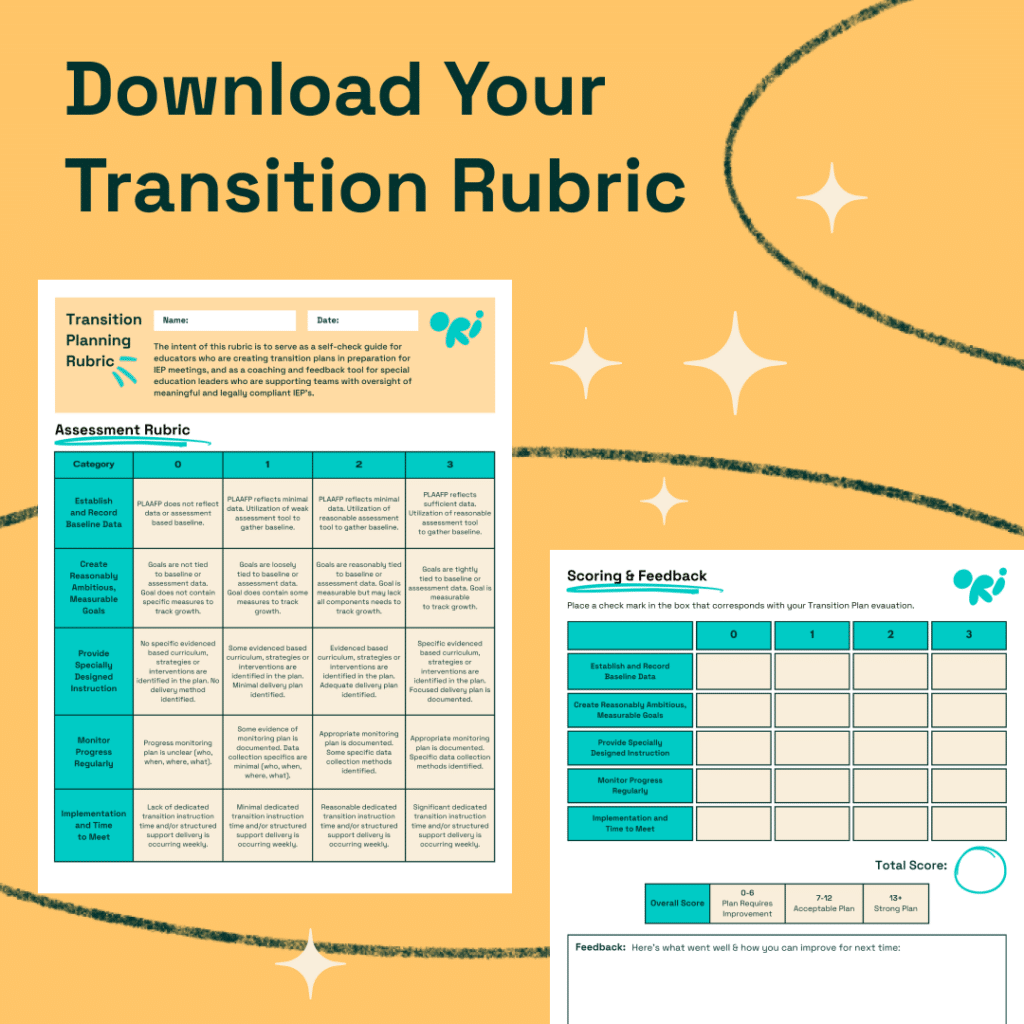


Negative self-talk can significantly impact students’ academic performance, self-esteem, and overall mental health. Creating IEP (Individualized Education Program) goals that target negative self-talk is crucial for fostering a positive self-image and building resilience in students with disabilities. This guide provides insights into formulating strategic IEP goals to help students overcome self-critical thoughts and enhance their emotional well-being.
Negative self-talk refers to the critical inner voice that decreases one’s sense of self-worth by promoting thoughts such as “I can’t do this” or “I’m not good enough.” In students with disabilities, these thoughts can be particularly debilitating and may hinder their academic and social development.
Addressing negative self-talk through IEP goals is essential because it:
Our Transition Planning Rubric is designed to support district leaders and educators in guiding their teams towards excellence in transition planning.
It provides comprehensive criteria that cover the breadth of transition planning, from gauging student engagement to evaluating post-secondary goals and services.
Expand your team’s capabilities and improve the success of IEP meetings.

Disclaimer: The following are sample goals meant to illustrate how negative self-talk IEP goals might be structured. However, it’s important to remember that each student’s IEP goals should be uniquely tailored to their individual circumstances, needs, and strengths
Developing targeted IEP goals for negative self-talk is a critical component of supporting students with disabilities. By fostering self-awareness, encouraging positive self-reflection, and teaching effective coping strategies, educators can help students build a stronger sense of self-worth and a more optimistic outlook, significantly enhancing their educational and personal development.
Prepare your students for lifelong success with Ori’s Transition Curriculum.